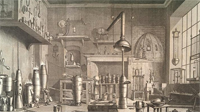 SN1 vs. SN2
SN1 vs. SN2
In Chemistry, there are plenty of technical issues to learn. One of which is the difference between SN1 and SN2 reactions. Actually, both SN1 and SN2 are Nucleophilic Substitution reactions, which are the reactions between an electron pair donor and an electron pair acceptor. In both types of reaction, a hybridized electrophile should have a leaving group (X), in order for the said reaction to take place.
During the SN1 type of reaction (two-step), a carbocation will initially be formed. It will then react with the nucleophile because it is free to attack from both sides; whereas, during the SN2 type of reaction, two molecules are involved in the actual transition state. The leaving of the departure group occurs simultaneously (one step) with the attack on the backside of the nucleophile. Due to this fact, it leads to a predictable configuration, and it can also be reversed.
In both reactions, the nucleophile participates with the departure group. It is always better to study the properties of the departure group, and it is also worthwhile to study the factors that will determine whether the particular reaction follows a SN1 or SN2 pathway.
The solvent that is used in the reaction also plays an important role in determining the pathway of the reaction. It is safer to assume that a primary-substituted departure group will follow a SN2 pathway, since the formation of the corresponding unstable primary carbenium ion is indigent.
The reaction of the SN1 pathway is highly feasible for compounds with tertiary substitution, since the corresponding tertiary carbenium ion is stabilized through hyper-conjugation. This is also because a carbenium ion is planar, less hindered, and more naturally reactive as opposed to the uncharged parent compound. So, it is actually better if the solvent stabilizes the ions so that the reaction can follow.
In summary, even though the SN1 and SN2 are both nucleophilic substitution reactions, there are some differences:
1. For SN1 reactions, the step determining the rate is unimolecular, whereas for a SN2 reaction, it is bimolecular.
2. SN1 is a two-step mechanism, whereas SN2 is only a one-step process.
3. During SN1 reactions, the carbocation will form as an intermediate, whereas, during SN2 reactions, it is not formed.
4. In SN2 reactions, one can draw the intermediate structure of where the carbon has a partial bond with the incoming nucleophile and the leaving group, whereas this is not possible in SN1 pathway reactions, since the neighboring groups are present.
- Difference Between Plant Protein and Animal Protein - March 7, 2024
- Difference Between Crohn’s and Colitis - March 7, 2024
- Difference Between Expression and Equation - March 7, 2024

MERU UNIVERSITY OF SCIENCE
AND TECHNOLOGY.students are happy
Reply
that’s great
Reply